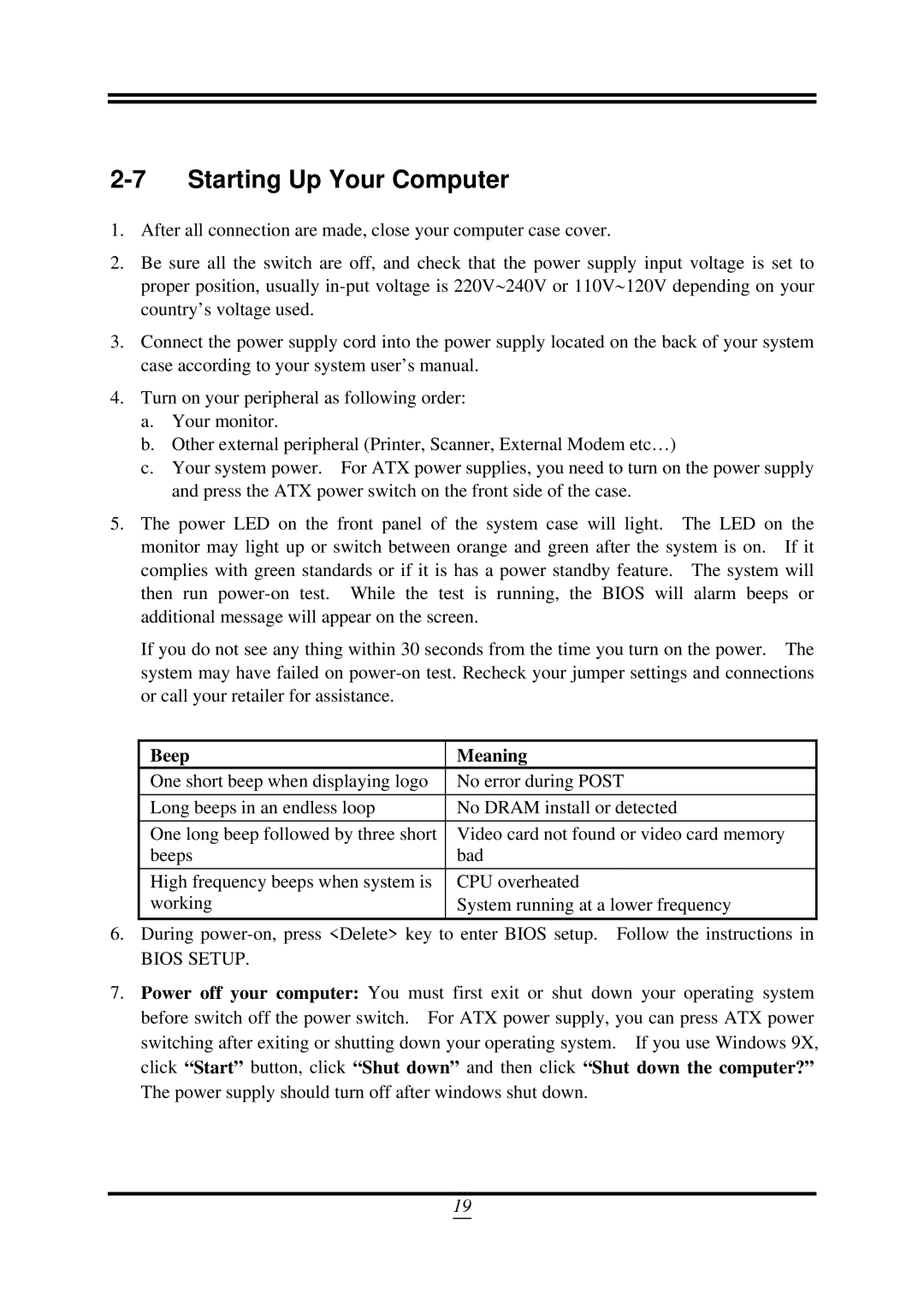
2-7 Starting Up Your Computer
1.After all connection are made, close your computer case cover.
2.Be sure all the switch are off, and check that the power supply input voltage is set to proper position, usually
3.Connect the power supply cord into the power supply located on the back of your system case according to your system user’s manual.
4.Turn on your peripheral as following order:
a.Your monitor.
b.Other external peripheral (Printer, Scanner, External Modem etc…)
c.Your system power. For ATX power supplies, you need to turn on the power supply and press the ATX power switch on the front side of the case.
5.The power LED on the front panel of the system case will light. The LED on the monitor may light up or switch between orange and green after the system is on. If it complies with green standards or if it is has a power standby feature. The system will then run
If you do not see any thing within 30 seconds from the time you turn on the power. The system may have failed on
Beep | Meaning |
One short beep when displaying logo | No error during POST |
Long beeps in an endless loop | No DRAM install or detected |
One long beep followed by three short | Video card not found or video card memory |
beeps | bad |
High frequency beeps when system is | CPU overheated |
working | System running at a lower frequency |
|
|
6.During
BIOS SETUP.
7.Power off your computer: You must first exit or shut down your operating system before switch off the power switch. For ATX power supply, you can press ATX power switching after exiting or shutting down your operating system. If you use Windows 9X, click “Start” button, click “Shut down” and then click “Shut down the computer?” The power supply should turn off after windows shut down.
19
